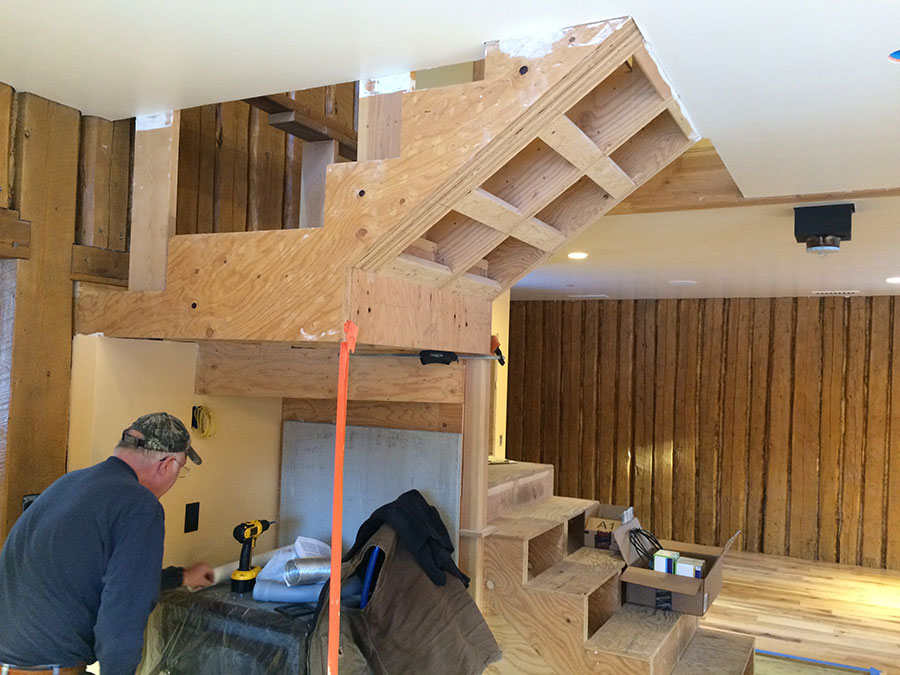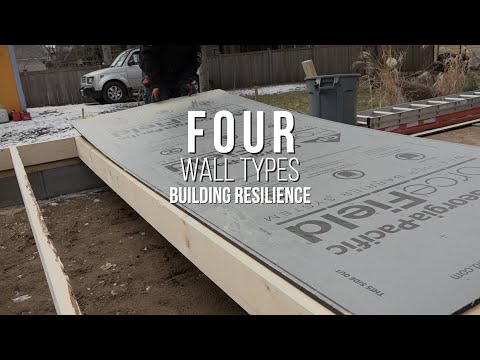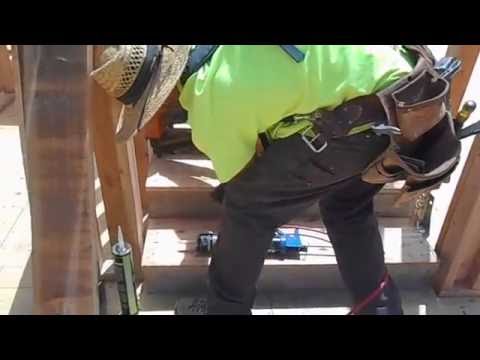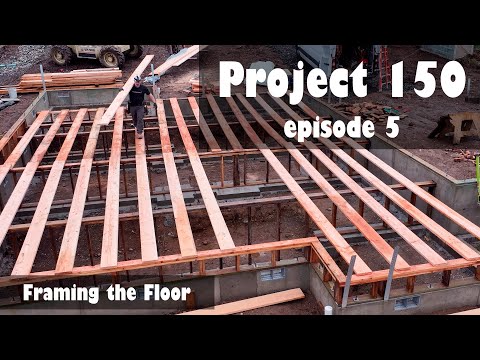Examples of rough carpentry include building scaffolding and concrete forms. In 1940, plywood was a new enough thing that it still represented a threat to jobs.
"Today, plywood is used extensively for this purpose... this has limited the carpenter's work for building forms out of lumber, although more work has been created for workers in plywood mills."
Other rough carpentry projects of the old days were barns, hog houses, poultry houses, machine sheds, granaries, and corn cribs.
Building houses for people also contained considerable amounts of rough carpentry, beginning with mudsills and floor framing. Diagonal bridging laid between the joist was cut by hand. One carpenter held the 1x4 in place as another carpenter cut it.
Rough flooring (subfloor), walls, and wall sheathing were also part of rough carpentry, as it is now.
In this video, the bottom plates are nailed down first and studs are nailed into the top plate. The wall is then stood atop the bottom plate and the studs are toenailed down.
"While studding and joists are cut to fairly accurate dimensions, a variation in length may be up to one-fourth inch without creating any serious difficulty."
When the roof covering is completed, inside work may progress regardless of the weather
After the plaster has dried, the carpenters return to install the inside finish work.
"This requires very careful and accurate work in order that all parts will fit exactly."
Stairs and cabinets are usually built at the mill, but
"...their installation on the job requires skill and judgment."
Doors were planed down to fit the jambs, which had already been installed as part of the rough carpentry.
Door and window jambs were needed as floats for plaster. Rough carpenters installed the door and window jambs after the framing, plaster was applied to the walls, flush with the surface of the jambs, and then the doors and windows were set into the frames.
The film continues with the 'jobs vs. technology' narrative...
Today the field of cabinetmaking has been reduced greatly by the substitution of other materials for wood, and the use of specialized machines in woodworking mills."
While the cabinets were made in a cabinet shop, they still had to be installed. This included planing drawers and setting doors.
The woodworking mill (4:18)
"For the most part, the men in the mill are machine operators, rather than woodworkers, although they do work with wood."
In the assembly department, men put together the windows and doors. If the machine operators got the dimensions right on the wood, the parts ought to fit together well.
Variations in size and moisture could cause problems, though, that would ...
"...require considerable judgment and skill to resolve..."
You get paid for what you do and what you know.
Stair building department (5:03)
"...this is a very high type of work and only woodworkers with great skill and long experience are entrusted with it."
Housed stringer staircases were made to fit the dimensions of custom and stock openings/heights. Custom situations—then and now—require ingenuity and creative thinking by the carpenter. Housed stringers were cut with routers using the same jigs we use now.
"If you prove your ability to take on extra responsibility, you may become a foreman, or inspector..."
Furniture and cabinetmaking (5:38)
"Although most furniture is machine made in large quantities, there is still some employment for well-trained workers in the building of made to order furniture and cabinets."
Cabinet shops were smaller than woodworking mills because they focused on quality over quantity. Chests of drawers, chairs, and tables were built by men using tools, not machines using men.
Veneering is highlighted in the video as an example of custom quality work. The pre-vacuum press technology uses a huge and heavy press with a lot of clamps.
Editor's note: This 1940's method still works for (at least) two things: veneering and creating a reason to buy more clamps.
Pattern making for machine shops (7:08)
Wooden patterns were used to form a hollow area in a bed of sand, which was then filled with molten metal (iron, aluminum, brass, or various alloys) to form a metal casting.
Pattern makers worked from blueprints to build models using various woodworking machines and hand tools. The difficult part was that most patterns had to be made in two or more pieces so that they could be removed from the sand mold.
The inside of the patterns was sealed with shellac.
Woodworking opportunities in the field (9:20)
Then as now, most contractors began as carpenters who progressed into business ownership. Then as now, carpentry is a great path to growing income by using your brain and hands.
"Practice on the job accompanied by further training in evening or correspondence schools should result in progress in an interesting occupation."
But, it warns, that success in this field, as in others, requires hard work and study.
"It is the use to which you put the tools that counts. And this requires training of the mind."
—This film was produced by Vocational Guidance Films, Inc. with manuscripts by Arthur P. Twogood, Associate Professor of Vocational education, Iowa State College. Distributed by The Magic Voice of the Screen.











